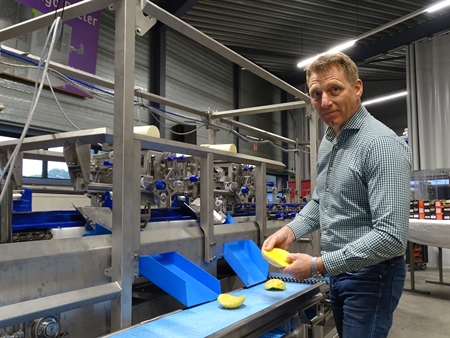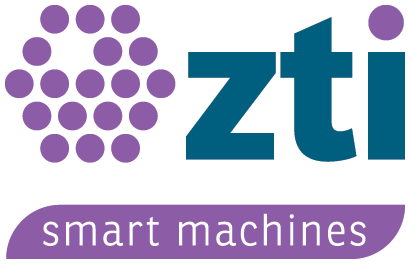Mango Peeler-de-Cheeker 20 peeling at full speed in Tuitjenhorn
The new Mango Peeler-de-Cheeker 20 peels and destones 20 mangoes per minute. Half the capacity of its big brother - the Mango Peeler-de-Cheeker 40. That machine processes, as the name says, 40 mangoes per minute. But those large quantities are not always necessary. Only the largest mango processors need that capacity, there are enough companies that only need half of it.
Hans Keijzer, director of ZTI says: "When we introduced the Mango Peeler-de-Cheeker 40 to the market, there was immediate international interest. We exhibited the machine at Fruit Logistica in Berlin. We gave continuous demonstrations for three days to the stand visitors. And they responded enthusiastically to the machine. The processing method was completely new. The mangoes really fly through the Mango Peeler-de-Cheeker while being peeled and destoned lengthwise. During processing the mango is carried on the stone. This keeps the fruit intact. And still, I get enthusiastic when I see the 40 machine in operation! It remains a cool sight. Nevertheless, we were also asked fairly quickly whether the MPDC40 could not be made a bit smaller. The 40 is really a huge device that also processes enormous amounts of mangoes. Of course, a company that peels fewer mangoes does not want the machine to stand still half the time and only take up space".
ZTI is often approached by customers for product-specific machines in the fruit processing industry. Vulnerable fruit in particular is a specialty of the company based in the Netherlands. For example, recently machines have been developed for cutting kiwi slices, watermelon wedges and watermelon cubes. The demand for a smaller version of the MPDC40 came back regularly. The ZTI engineers were commissioned to develop a smaller and more economical machine, based on the MPDC40 processing method. That machine is now ready and can be viewed working at ZTI.
Keijzer: "We are delighted that the machine is processing in our workshop now. The design has changed quite a bit. For example, there are fewer protective covers, making the machine easier to clean and maintain. The footprint has also become somewhat smaller. But the unique peeling method, from head to tail, and transporting the fruit on the stone has remained the same. The yield results are also very good with this smaller version. There is little loss of fruit because the machine peels with knives that follow the outline of the fruit. Stoning with the bowl-shaped oscillating knives also ensures that the fruit is not damaged and that it can work close to the stone".





